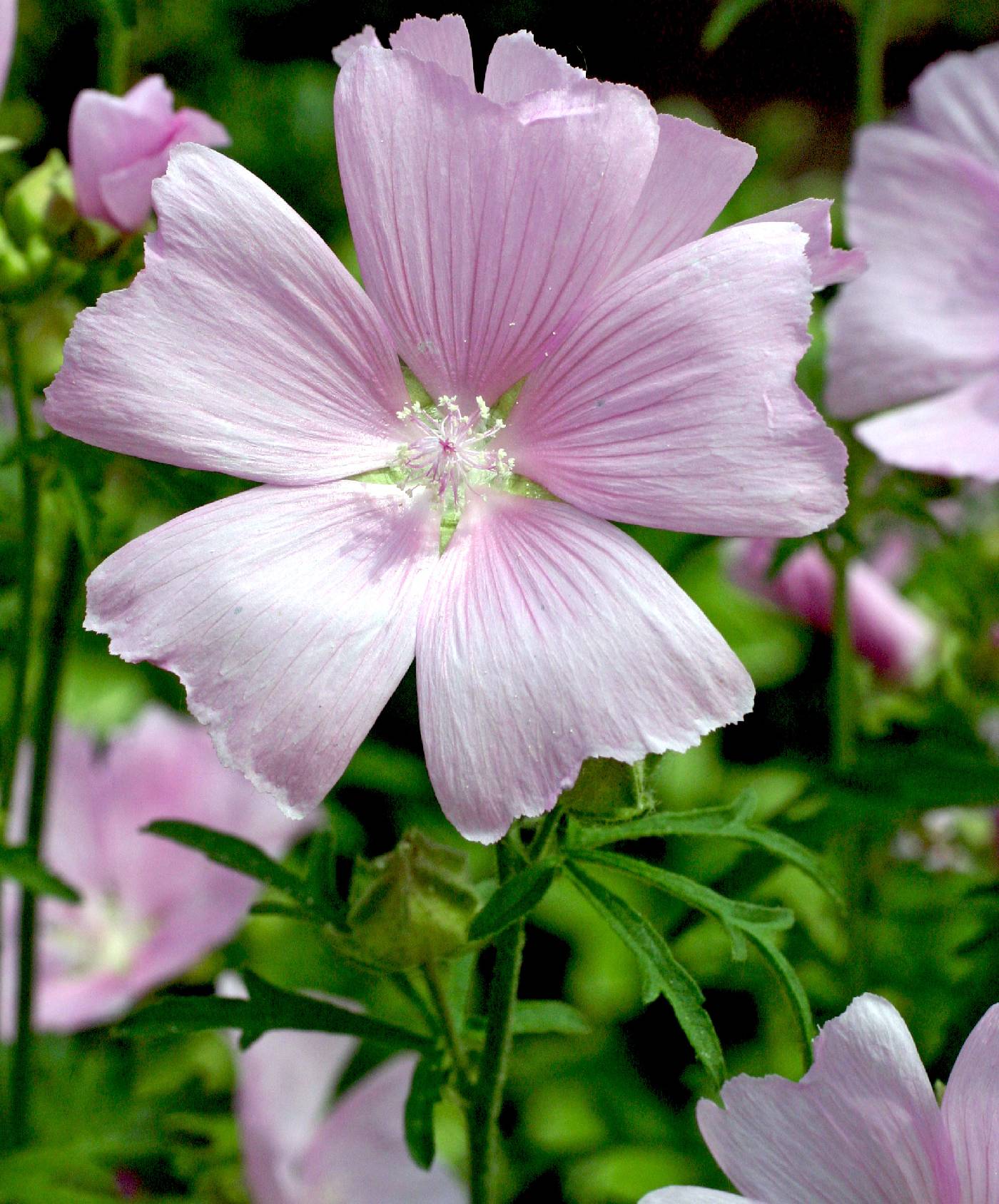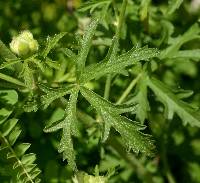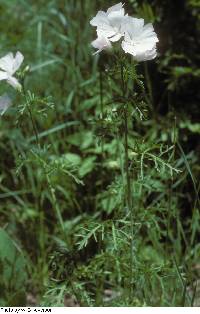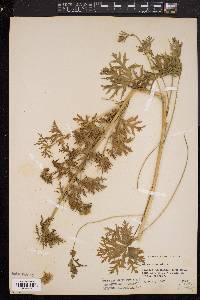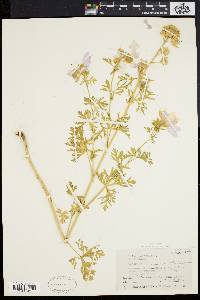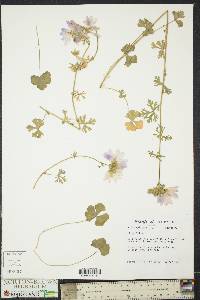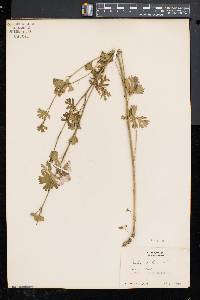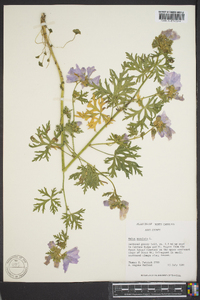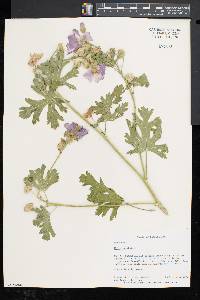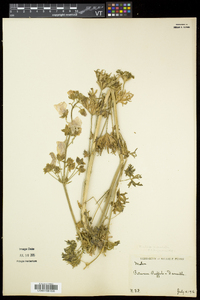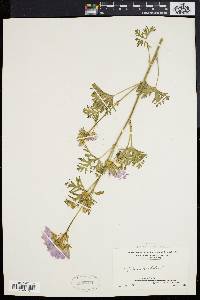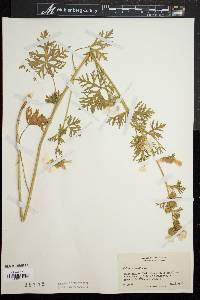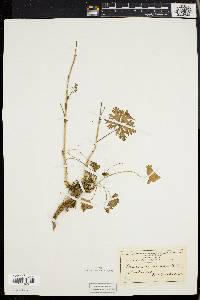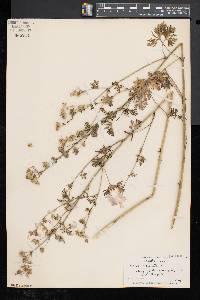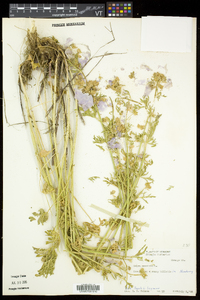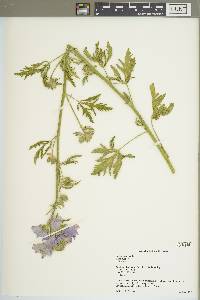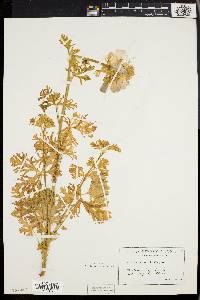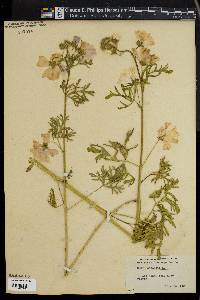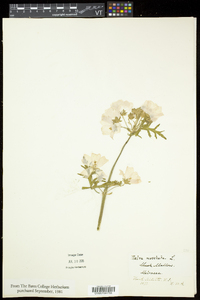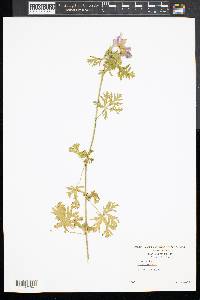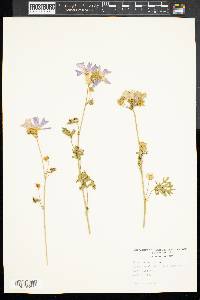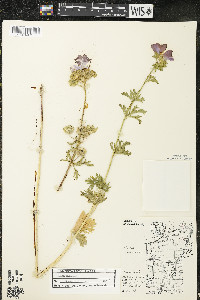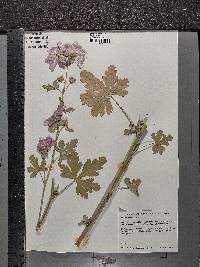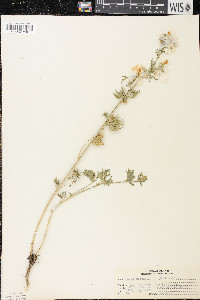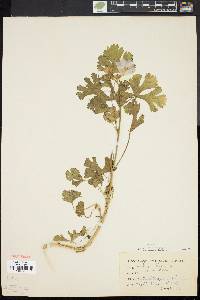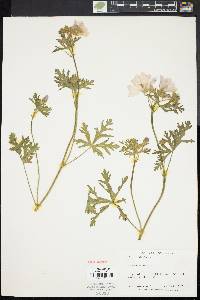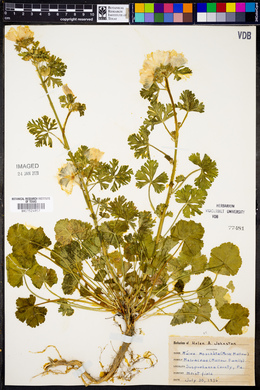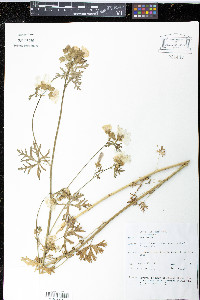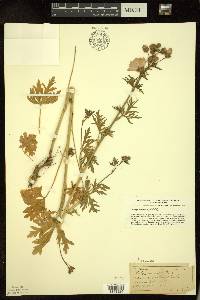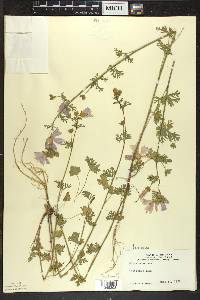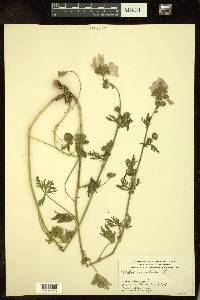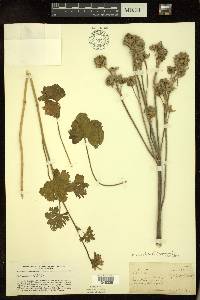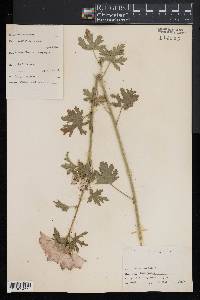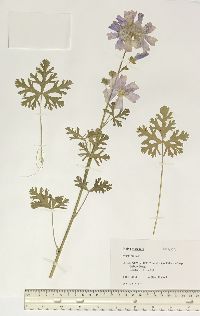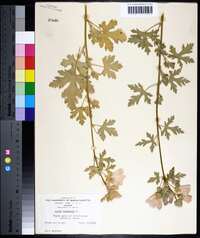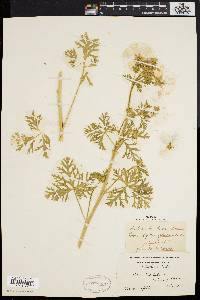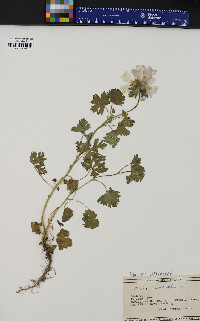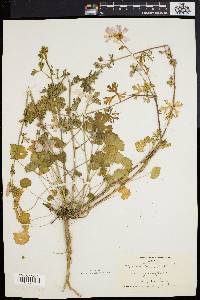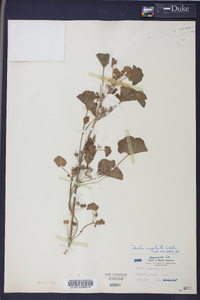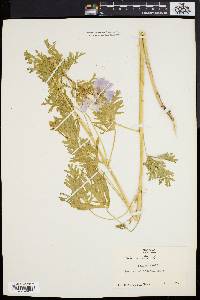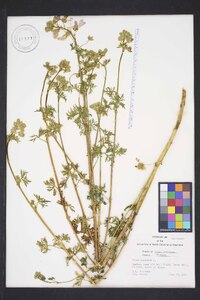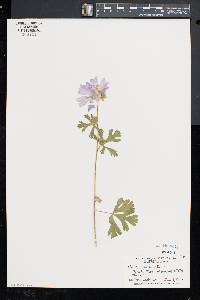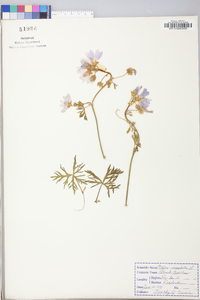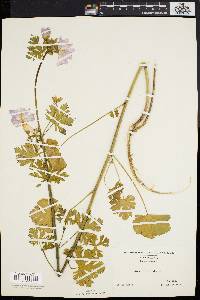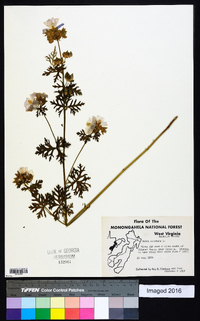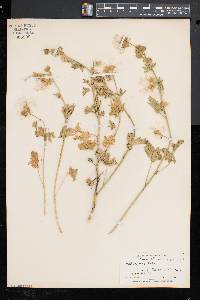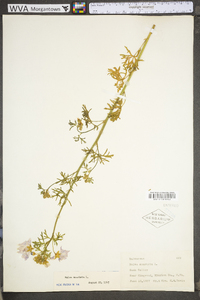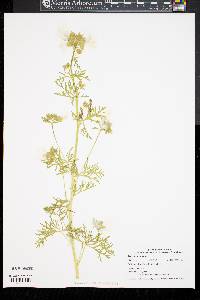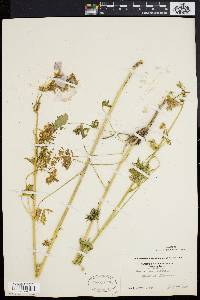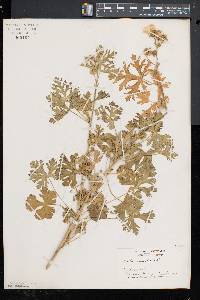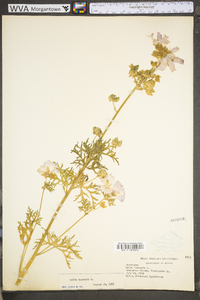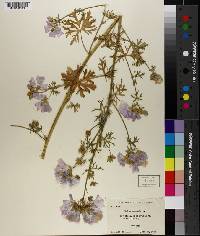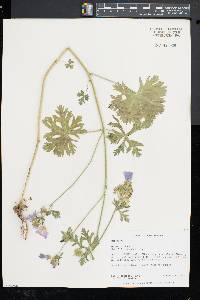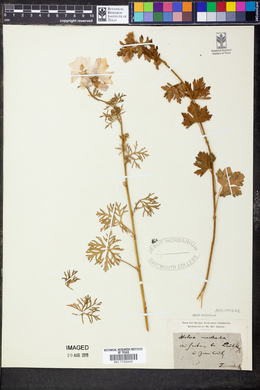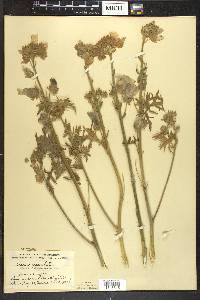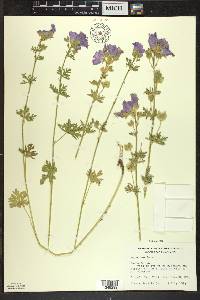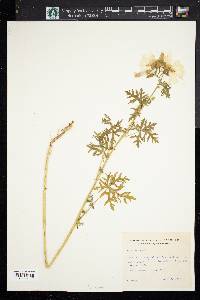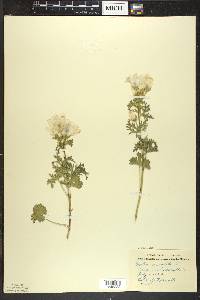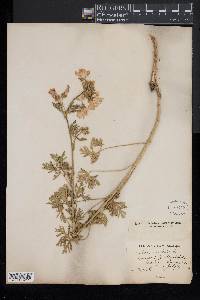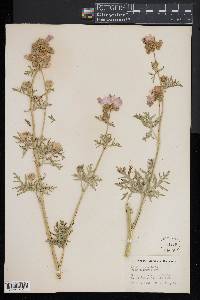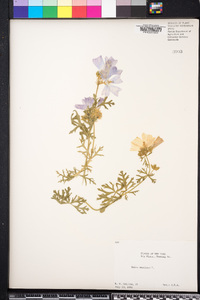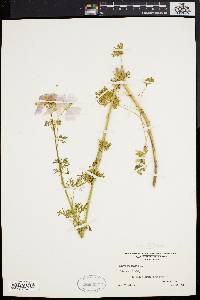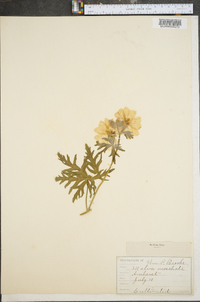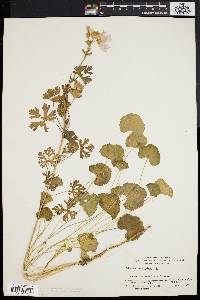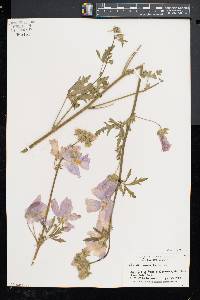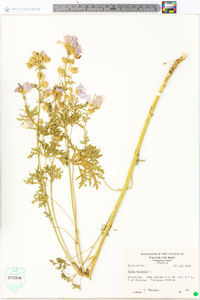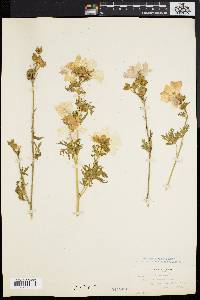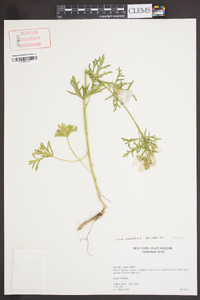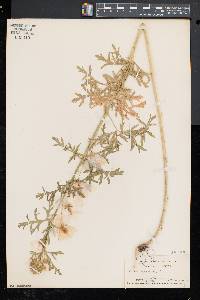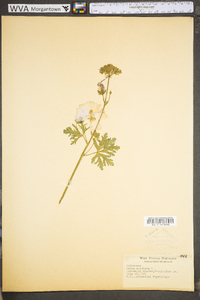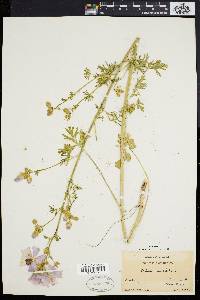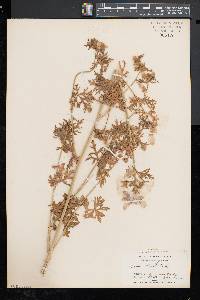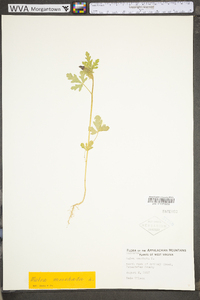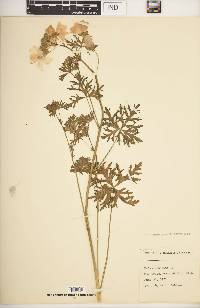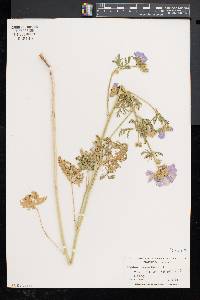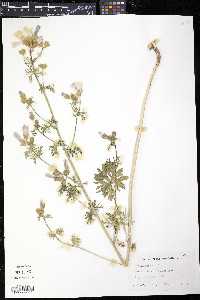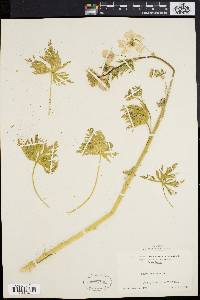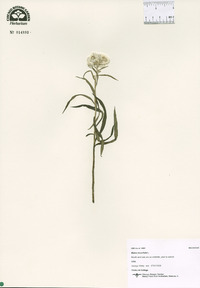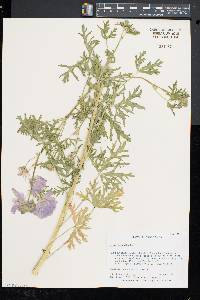Malva moschata
|
|
|
|
Family: Malvaceae
Musk Mallow
|
Perennial herb 40 cm - 1 m tall Stem: ascending to erect, rough with scattered spreading hairs. Leaves: alternate, stalked, somewhat circular in outline, but deeply palmately, five- to seven-lobed with lobes further deeply pinnately lobed into rather narrow sections. Flowers: many, axillary in upper leaves or crowded in terminal clusters, long-stalked, showy, white to pale purple, 4 - 6 cm diameter, radially symmetric, with five fairly erect petals, and sepals immediately subtended by three linear to narrowly lance-shaped bractlets. While the bractlets are usually hairless along their outer surface, their edges are typically fringed with long slender hairs. Sepals: five, but fused for up to half their length, then separating into five triangular to egg-shaped lobes. The calyx as a whole is covered mostly with long unbranched hairs, but there may also be some star-shaped branching hairs mixed in as well. Petals: five, fairly erect though spreading beyond middle, white to pale purple, 2 - 3 cm long, triangular with narrow base and the broad outer edge shallowly indented or notched. Stamens: numerous, but filaments fused into an elongate tube with the anthers protruding near the top. Pistil: enclosed by the stamen tube, with ten to twenty superior carpels (ovule-bearing structures), ten to twenty slender styles coming up through center of stamen tube, and ending with exserted, slender stigmas facing inward. Fruit: a ring of ten to twenty, one-seeded, hard, dark, hairy, somewhat kidney- to crescent-shaped, beakless, wedge-like segments (mericarps), which typically separate from each other for dispersal, but do not open to release the seed (indehiscent). The mericarps are actually somewhat hairless on their rounded outer side, but along and near the edges they are densely hairy with long white hairs. The ring of fruit segments looks similar to a peeled tangerine or clementine fruit where the slices or wedges would be analogous to mericarps. Similar species: Malva moschata is very similar to M. alcea, but that species has its leaf lobes only coarsely toothed (or very shallowly lobed only in upper leaves), its subsepal bractlets are much wider and covered with both unbranched and star-shaped branched hairs, the sepals also mostly have star-shaped branched hairs on their outer surface, and the fruit segments (mericarps) are only sparsely hairy on their outsides, but have a lengthwise ridge (keel) running down the outside. The other species of Malva in our area do not have deeply lobed leaves, and the petals are rarely longer than 2.5 cm. It is possible one could mistake M. moschata with our species of Callirhoe, but all of those species have very wide, egg-shaped stipules while those of Malva are narrow and more linear. Flowering: June to September Habitat and ecology: Introduced from Europe, escaped from cultivation and mostly found along roadsides and in waste places. Occurence in the Chicago region: non-native Etymology: Malva means Mallow. Moschata means musk-scented. Author: The Field Museum Erect perennial, 4-10 dm, rough-hairy; lvs orbicular in outline, 5-7-parted, the segments of the upper lvs again deeply pinnatifid; fls partly solitary on long pedicels from
the upper axils, but chiefly crowded in terminal clusters; bractlets linear to narrowly lanceolate or oblanceolate, ciliate, glabrous or nearly so on the back; pet white to pale purple, triangular, 2-3.5 cm; mature carpels densely hairy, rounded on the back, not rugose; 2n=42. Native of Europe, escaped from cult., along roadsides and in waste places; Que. and N.S. to B.C., s. to Va. and Mo., more common northward. June-Sept. Gleason, Henry A. & Cronquist, Arthur J. 1991. Manual of vascular plants of northeastern United States and adjacent Canada. lxxv + 910 pp. ©The New York Botanical Garden. All rights reserved. Used by permission. From Flora of Indiana (1940) by Charles C. Deam There are three reports from Indiana. There is a pink and a white form. My specimen is the white form and was collected along a roadside 5 miles north of Goshen in Elkhart County. .…… Indiana Coefficient of Conservatism: C = null, non-native Wetland Indicator Status: N/A |

